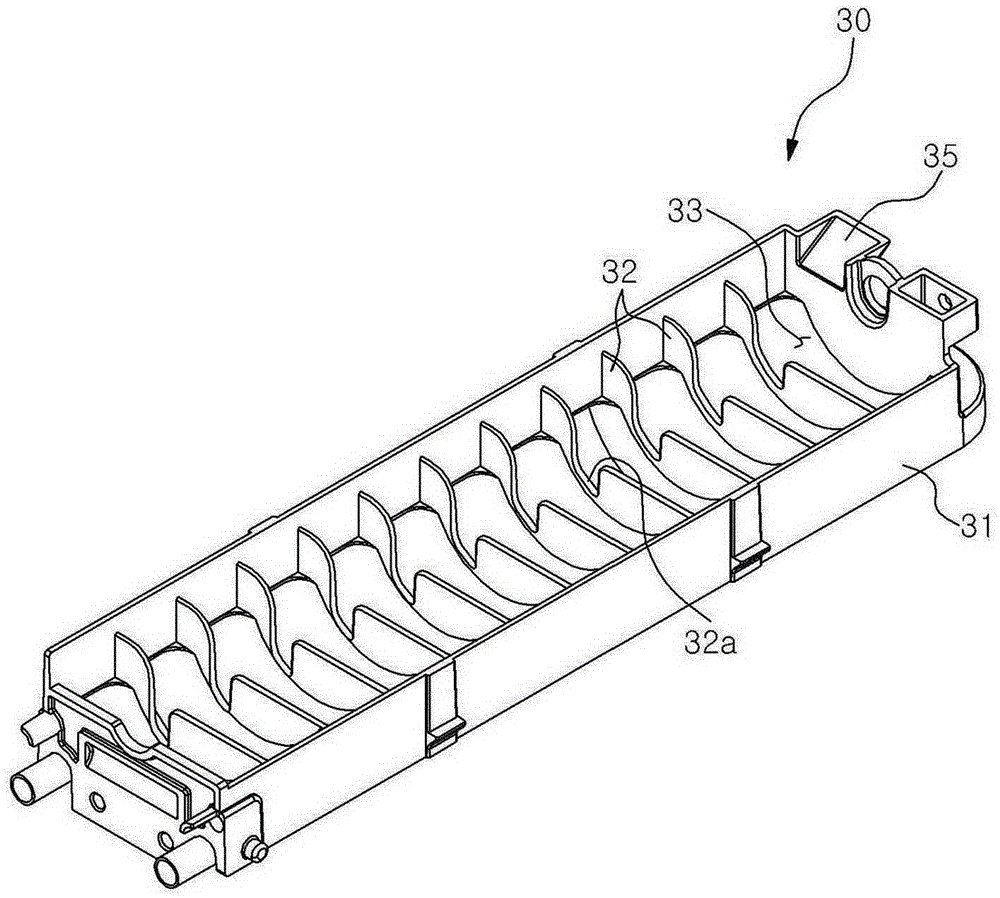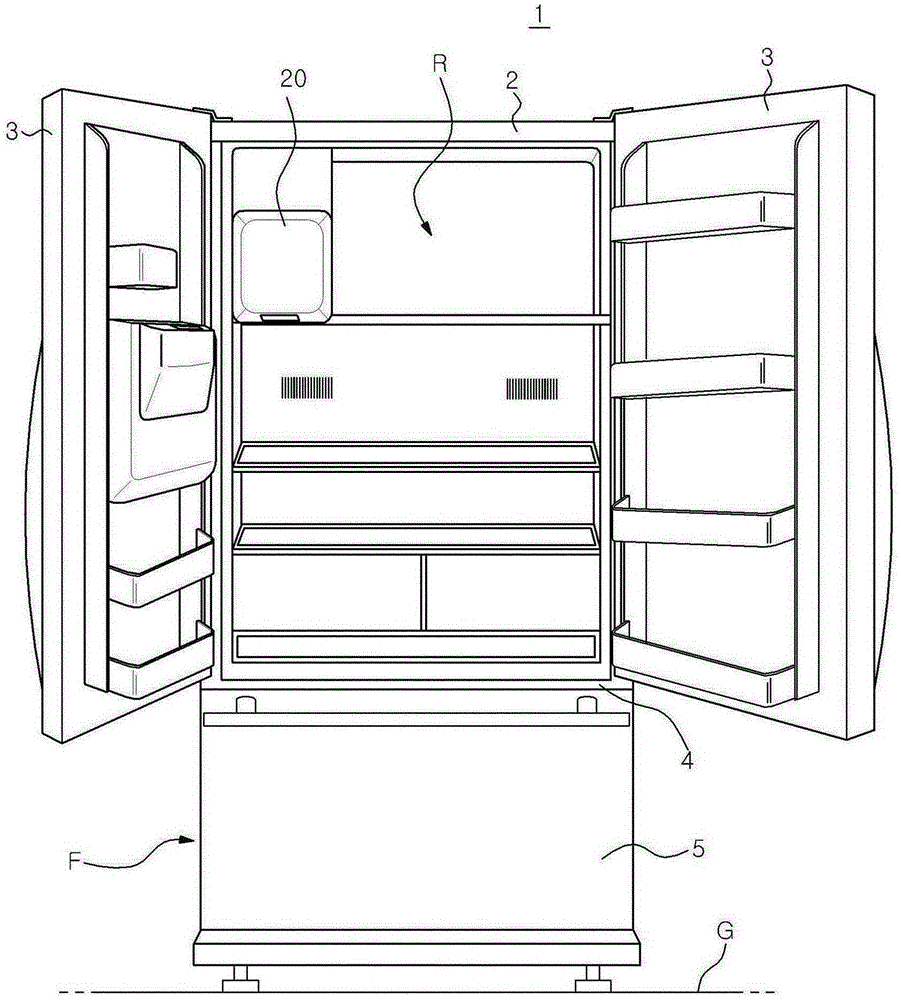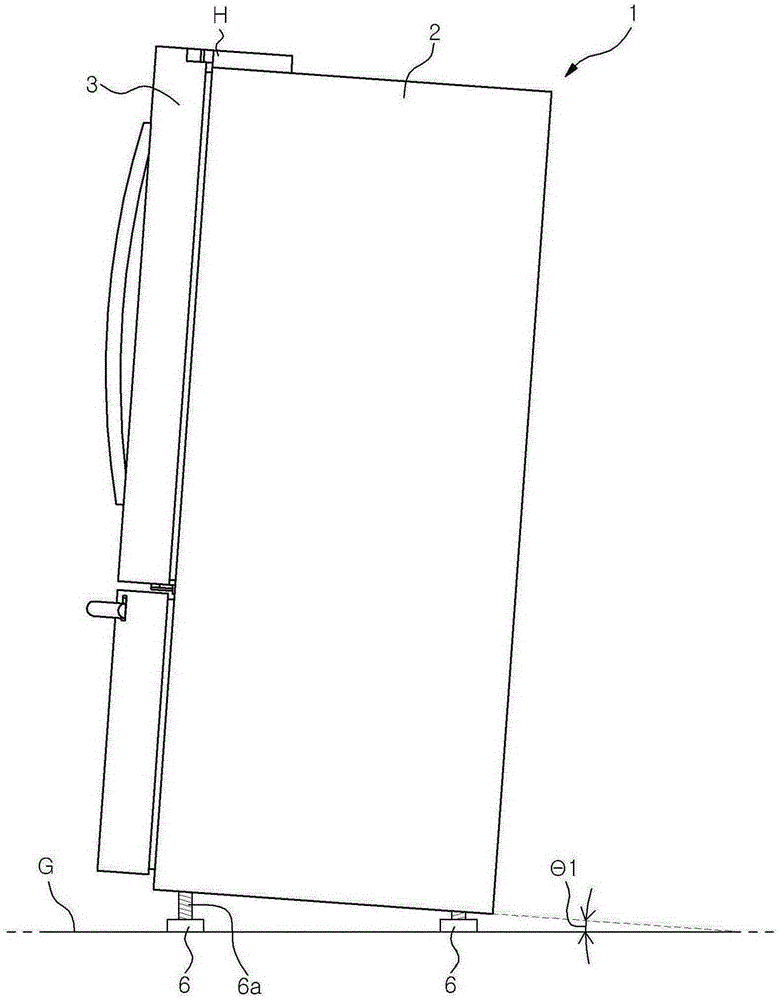Refrigerator and method of supplying water in refrigerator
A technology for a refrigerator and a water supply pipe is applied in the field of refrigerators and water supply in refrigerators, and can solve the problems of uneven distribution of water and inability of water to move.
- Summary
- Abstract
- Description
- Claims
- Application Information
AI Technical Summary
Problems solved by technology
Method used
Image
Examples
Embodiment Construction
[0029] In the following detailed description, reference is made to the accompanying drawings, which form a part of this application document. The illustrative embodiments described in the detailed description, drawings, and claims are not intended to be limiting. Other embodiments may be utilized, and other changes may be made, without departing from the spirit and scope of the subject matter presented herein.
[0030] One or more exemplary embodiments of the present disclosure will be described more fully hereinafter with reference to the accompanying drawings, wherein one or more exemplary embodiments of the present disclosure can be easily ascertained by those skilled in the art. As those skilled in the art would realize, the described exemplary embodiments may be modified in various different ways, all without departing from the spirit or scope of the present disclosure, which is not limited to the exemplary implementations described herein. example.
[0031] Note that t...
PUM
 Login to View More
Login to View More Abstract
Description
Claims
Application Information
 Login to View More
Login to View More - R&D
- Intellectual Property
- Life Sciences
- Materials
- Tech Scout
- Unparalleled Data Quality
- Higher Quality Content
- 60% Fewer Hallucinations
Browse by: Latest US Patents, China's latest patents, Technical Efficacy Thesaurus, Application Domain, Technology Topic, Popular Technical Reports.
© 2025 PatSnap. All rights reserved.Legal|Privacy policy|Modern Slavery Act Transparency Statement|Sitemap|About US| Contact US: help@patsnap.com



